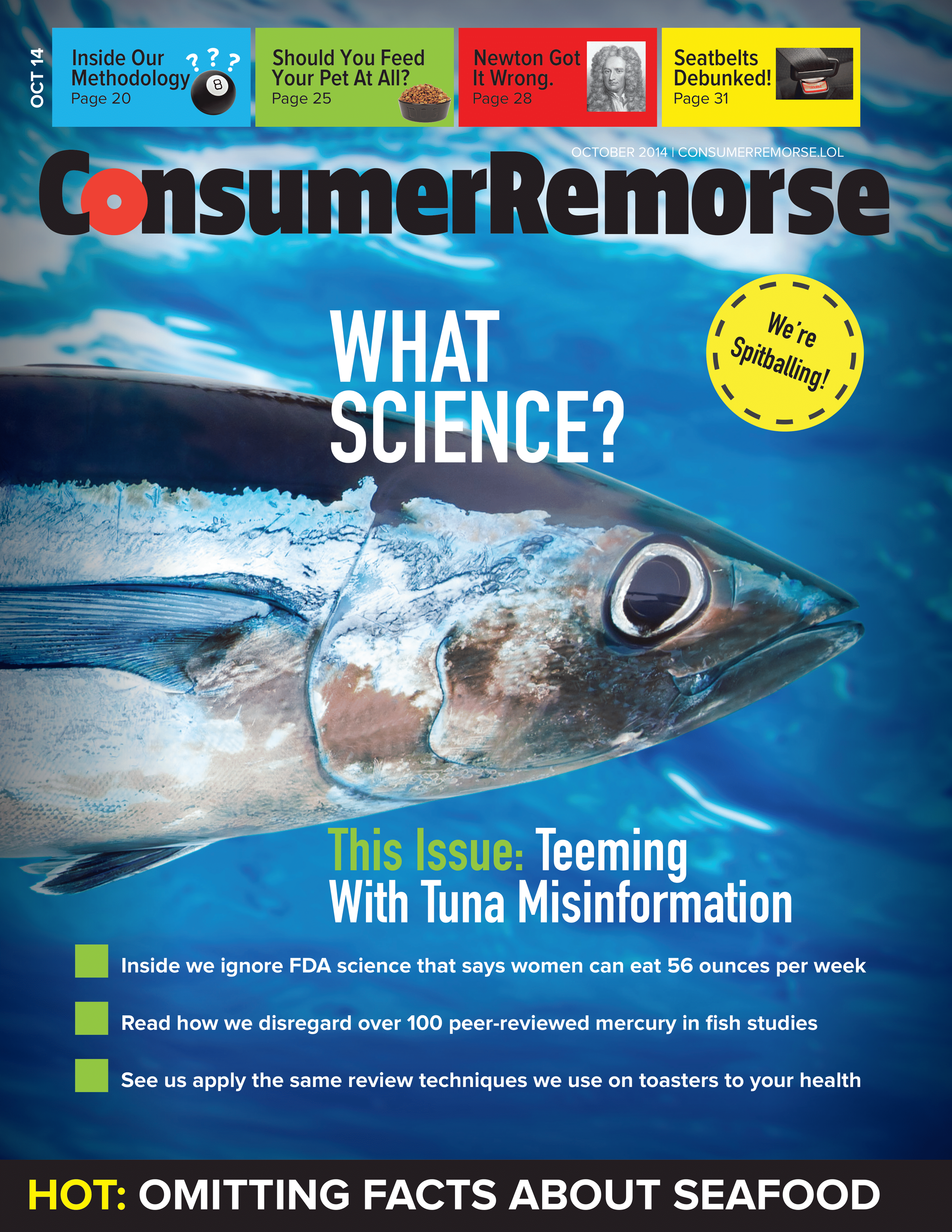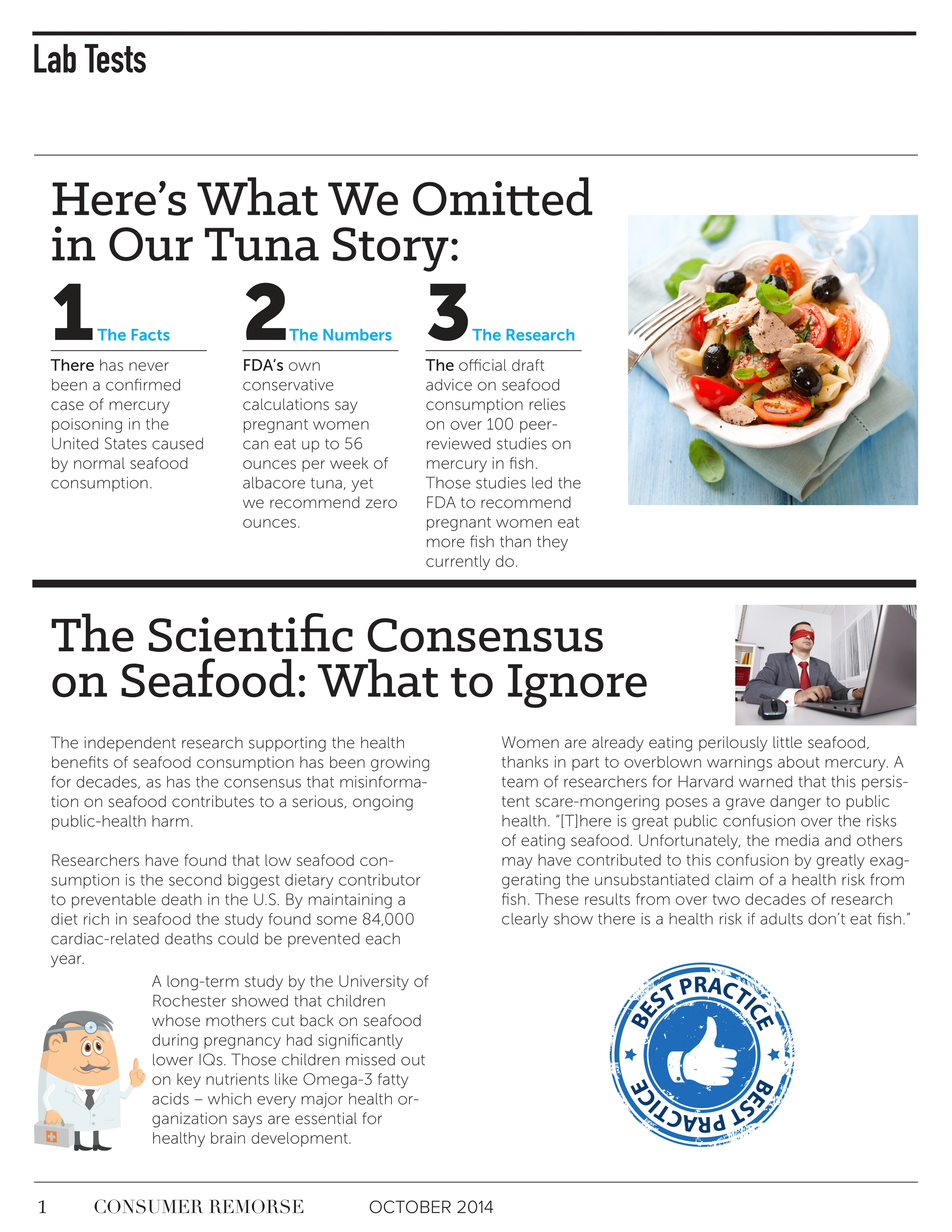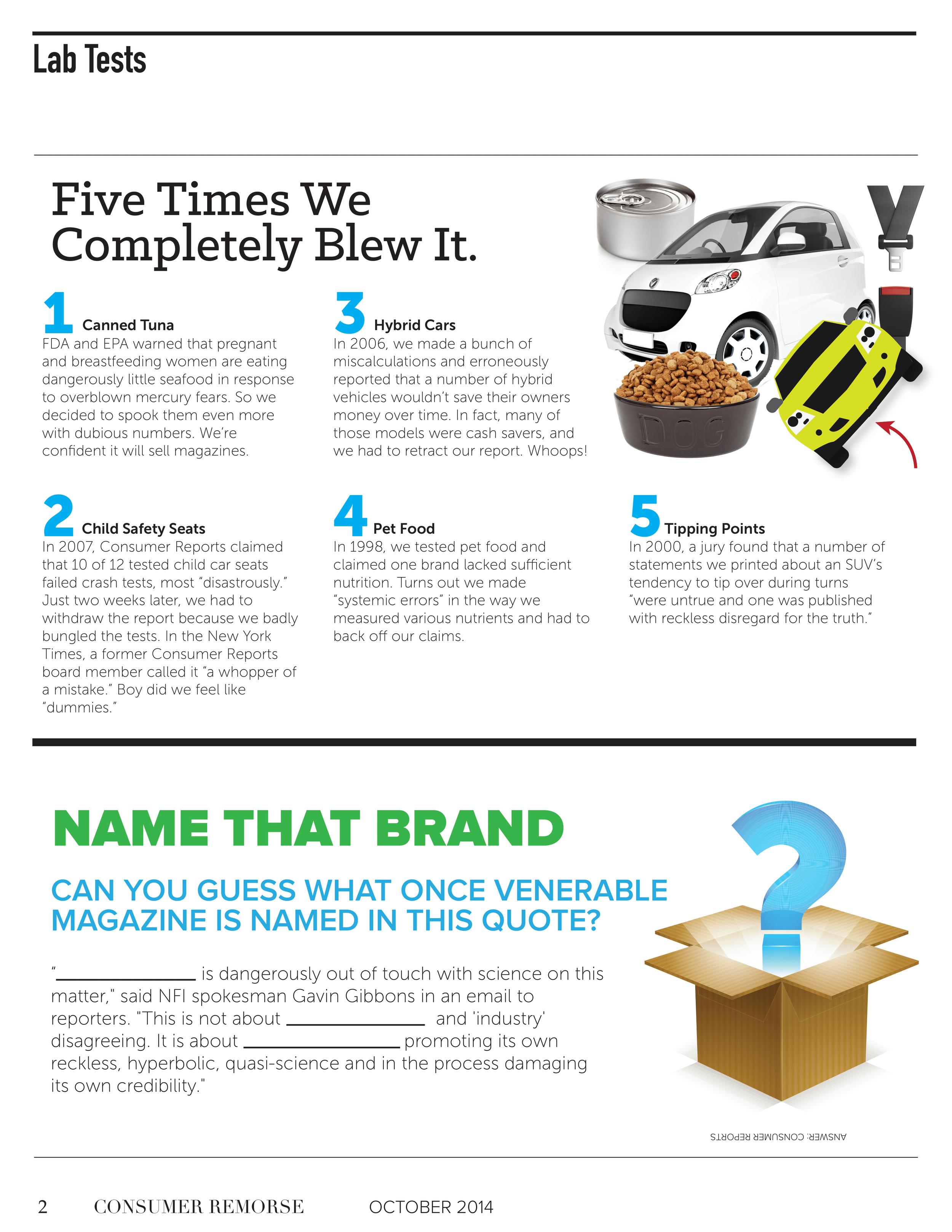Eat This AND That: When It Comes to Canned and Pouched Tuna, All Choices Are Good Choices
Another day, another fear-driven listicle on seafood nutrition. A recent Eat This, Not That article titled “11 Great Canned Tunas and 3 You Might Want to Skip” purports to guide consumers toward “healthier” canned tuna choices. Not because of any serious issue like food safety or practical issue like price or taste, but because of small differences in alleged mercury content or fat grams. Instead of empowering seafood consumption—a critically important public health goal—this fuels confusion, fear, and risk aversion over one of the most nutrient-dense, affordable, and accessible foods in the grocery store. The result? Misguided advice that risks doing more harm than good—especially in a country already consuming too little seafood.
Let’s set the record straight. Canned tuna — across all major brands and varieties — is a safe, nutrient-rich, and expert-recommended food. The U.S. Departments of Agriculture (USDA) and Health and Human Services (HHS) have made it clear in the Dietary Guidelines for Americans that people should be eating at least two to three servings of seafood per week. The average American falls well short of this. That shortfall is linked to preventable cardiovascular deaths, cognitive decline, and poorer outcomes in maternal and child health.
Canned tuna, in particular, offers exceptional value: lean protein, omega-3 fatty acids, vitamin D, selenium, and other nutrients — all in a shelf-stable, widely accessible format that fits nearly every budget.
The Eat This piece highlights mercury concerns based on a Consumer Reports analysis. There are many, many, many reasons to be skeptical of Consumer Reports, which we won’t rehash in full. But decades of peer-reviewed research and testing have consistently shown that the levels of mercury found in commercially sold canned tuna are well within safe limits set by government experts—which themselves already build in massive safety cushions.




What’s more, by singling out specific products as “worth skipping,” the article perpetuates an elitist food shaming dynamic. Are those products slightly lower in protein or higher in fat? Maybe. But for many families, a $1.50 can of tuna or a ready-to-eat pouch is an affordable, nutritious, and practical meal. These are precisely the kinds of products we should be promoting, not deriding.
This isn’t just about tuna — it’s about the way we talk about food. When influencers with no formal nutrition training cherry-pick data to push headlines, it confuses consumers, undermines confidence in perfectly healthy foods, and makes it harder for people to eat well. Worse, it feeds into a broader distrust of institutions like the FDA and USDA that base their guidance on rigorous, peer-reviewed science.
In the end, articles like this don’t serve consumers—they serve algorithms. They reduce a nuanced and vital topic to a listicle, using marginal differences in nutrient labels to imply that some brands of tuna are dangerously inferior. They’re not. And when these kinds of posts contribute to ongoing consumer skepticism about seafood, they undermine what should be a shared national goal: getting Americans to eat more fish, not less.
The bottom line: all varieties of canned tuna sold in the U.S. are safe, nutritious, and consistent with expert dietary recommendations. If you like yours in oil, in water, in a pouch, or with a cracker kit — go for it. Your body (and brain) will thank you. The real danger isn’t in the can. It’s in letting internet bogus nutrition advice override sound science and public health.
